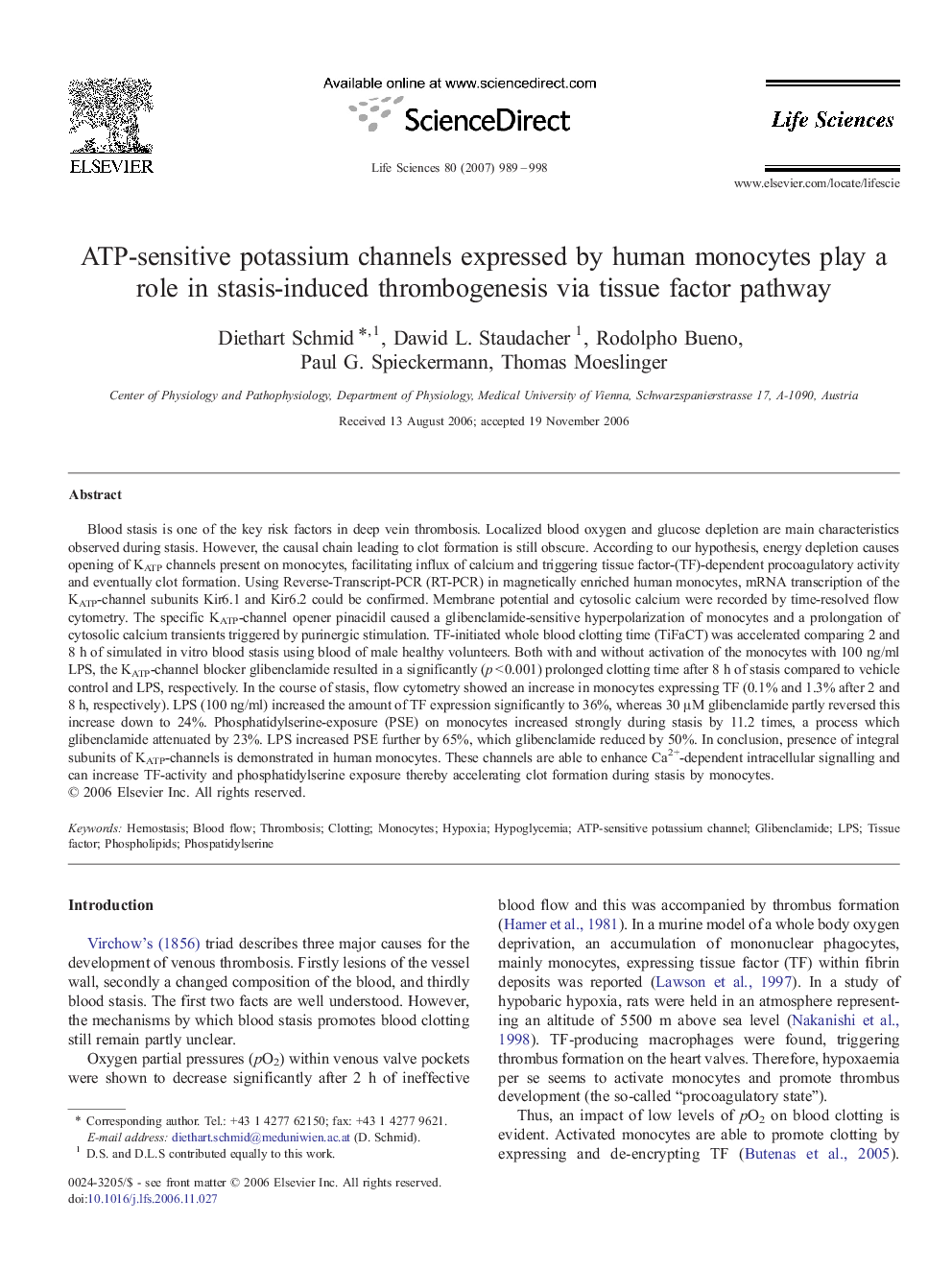| کد مقاله | کد نشریه | سال انتشار | مقاله انگلیسی | نسخه تمام متن |
|---|---|---|---|---|
| 2553651 | 1124917 | 2007 | 10 صفحه PDF | دانلود رایگان |

Blood stasis is one of the key risk factors in deep vein thrombosis. Localized blood oxygen and glucose depletion are main characteristics observed during stasis. However, the causal chain leading to clot formation is still obscure. According to our hypothesis, energy depletion causes opening of KATP channels present on monocytes, facilitating influx of calcium and triggering tissue factor-(TF)-dependent procoagulatory activity and eventually clot formation. Using Reverse-Transcript-PCR (RT-PCR) in magnetically enriched human monocytes, mRNA transcription of the KATP-channel subunits Kir6.1 and Kir6.2 could be confirmed. Membrane potential and cytosolic calcium were recorded by time-resolved flow cytometry. The specific KATP-channel opener pinacidil caused a glibenclamide-sensitive hyperpolarization of monocytes and a prolongation of cytosolic calcium transients triggered by purinergic stimulation. TF-initiated whole blood clotting time (TiFaCT) was accelerated comparing 2 and 8 h of simulated in vitro blood stasis using blood of male healthy volunteers. Both with and without activation of the monocytes with 100 ng/ml LPS, the KATP-channel blocker glibenclamide resulted in a significantly (p < 0.001) prolonged clotting time after 8 h of stasis compared to vehicle control and LPS, respectively. In the course of stasis, flow cytometry showed an increase in monocytes expressing TF (0.1% and 1.3% after 2 and 8 h, respectively). LPS (100 ng/ml) increased the amount of TF expression significantly to 36%, whereas 30 μM glibenclamide partly reversed this increase down to 24%. Phosphatidylserine-exposure (PSE) on monocytes increased strongly during stasis by 11.2 times, a process which glibenclamide attenuated by 23%. LPS increased PSE further by 65%, which glibenclamide reduced by 50%. In conclusion, presence of integral subunits of KATP-channels is demonstrated in human monocytes. These channels are able to enhance Ca2+-dependent intracellular signalling and can increase TF-activity and phosphatidylserine exposure thereby accelerating clot formation during stasis by monocytes.
Journal: Life Sciences - Volume 80, Issue 11, 20 February 2007, Pages 989–998